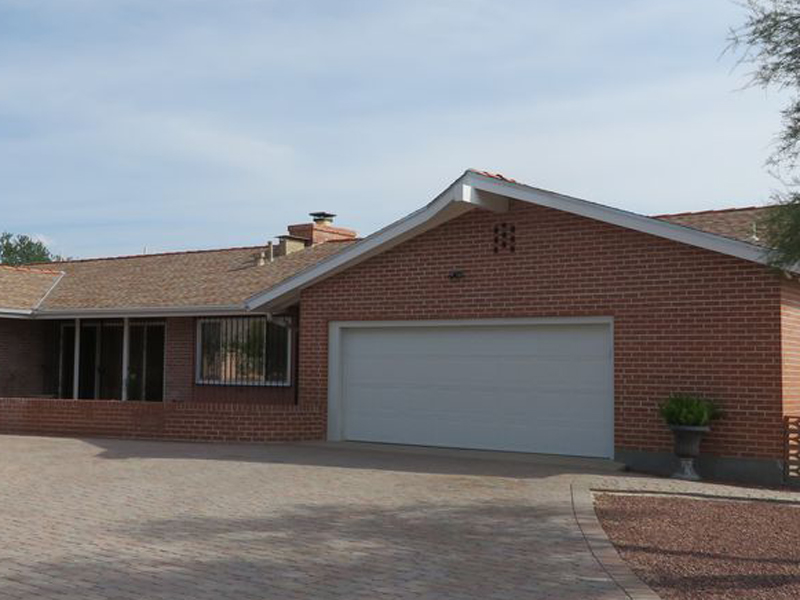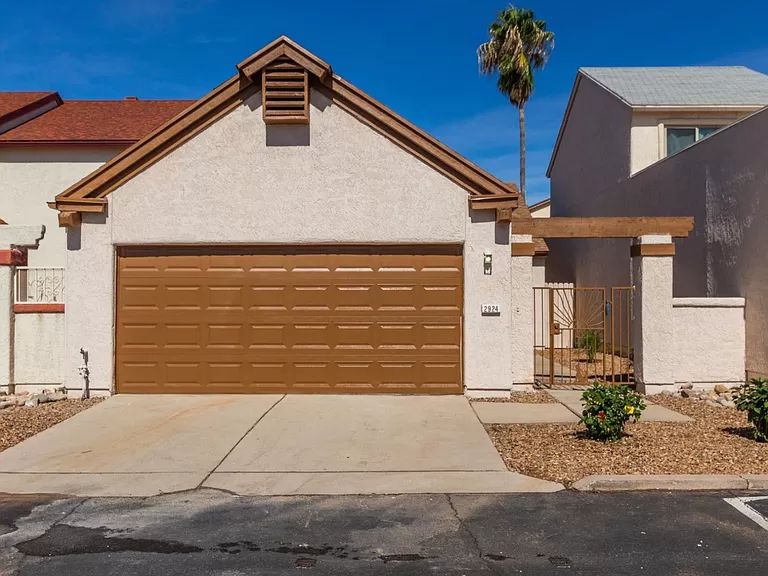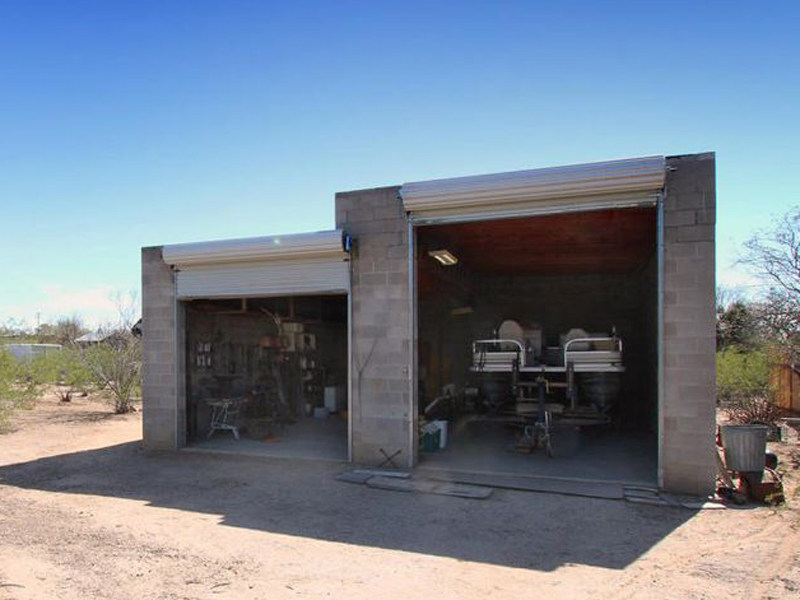Is Your Garage Door Stuck? Here's What to Do Initial
When your garage door won't open, start with these necessary safety and security checks prior to attempting any repair work. First, ensure no one is standing near the door which vehicles are clear of the opening. Seek apparent indicators of damage like broken panels, curved tracks, or hanging wires. If you see a snapped spring or seriously damaged elements, quit promptly and call a professional—-- these repairs require customized devices and experience to deal with safely.

Check These 6 Points Prior To Calling a Professional
Before presuming you require pricey repair services, run through this fast diagnostic checklist that addresses most garage door issues:
-
Power source: Confirm the opener is connected in and the electrical outlet is working
-
Remote batteries: Change dead batteries in your remote
-
Hand-operated lock: Examine if a person inadvertently engaged the hand-operated lock
-
Obstructions: Seek particles obstructing the door's path or sensors
-
Emergency launch: Ensure the red emergency cord hasn't been pulled
-
Circuit breaker: Verify the garage circuit hasn't tripped
These easy checks deal with approximately 70% of garage door problems without calling for expert treatment.
10 Common Reasons Your Garage Door Will Not Open Up
Understanding why your garage door opener isn't working assists you select the best service. Here are the most frequent causes homeowners encounter:
Dead remote batteries represent the easiest solution—-- when batteries die, the remote can not send out signals to the opener. Power outages or tripped breakers reduced electrical energy to the electric motor. Busted springtimes prevent the door from lifting correctly and require immediate expert focus. Sensing unit imbalance reasons safety systems to obstruct door operation. Track blockages quit rollers from moving smoothly. Motor overload triggers automated shutoffs when the opener finds resistance. Limitation button problems confuse the opener about door placement. Cable television damage interferes with the lifting device. Weather-related concerns influence door motion throughout extreme temperature levels. Element wear from age gradually lowers system performance.
Problem # 1: Dead Remote Control Batteries
When your wall surface button functions yet your remote doesn't, dead batteries are typically the perpetrator. Most garage door remotes use either 3-volt lithium or 12-volt alkaline batteries. Get rid of the back cover of your remote and inspect the battery kind. Change with fresh batteries and evaluate the remote. If it still does not work, you might require to reprogram it to your opener. Consult your opener's manual for specific reprogramming directions, as the process varies by maker.
Trouble # 2: Power Supply Issues
Garage door power problems usually come from loose connections or tripped circuits. Inspect that the opener is firmly connected into its electrical outlet—-- resonance can loosen connections gradually. Check the outlet with one more tool to validate it's working. Examine your home's breaker box for stumbled circuits, particularly if you have actually experienced tornados or power fluctuations. GFCI electrical outlets may have tripped and need resetting. If the opener has power however will not respond, the concern most likely lies somewhere else in the system.
Problem # 3: Broken or Damaged Springs
Broken garage door springs are amongst one of the most hazardous parts to deal with. If you hear a loud bang from your garage or discover the door feels incredibly hefty when attempting to raise by hand, a spring has actually likely snapped. Torsion springs run horizontally over the door, while expansion springs sit on either side. Never ever attempt springtime repairs on your own—-- these parts store significant tension that can create major injury or death. Professional substitute normally costs $150-$300 but ensures your safety and security.
Issue # 4: Obstructed Safety Sensing Units
Modern garage doors feature safety sensing units that avoid closure when items are detected. These sensors can quit the door from opening if they're unclean, misaligned, or blocked by particles. Clean sensing unit lenses with a soft fabric and make certain nothing blocks the invisible beam in between them. Examine that sensors are appropriately aligned—-- the majority of have indicator lights that show link condition. Sensor problems frequently resolve with easy cleaning and change.
Issue # 5: Track Obstructions or Damages
Garage door tracks overview rollers as the door goes up and down. Dust, particles, old oil, or little objects can jam the system. Check tracks visually and get rid of any blockages with a brush or cloth. Try to find dents, bends, or warping that could restrain smooth operation. Small track adjustments are feasible for handy house owners, but substantial damages requires expert repair work to avoid further issues or safety and security threats.
Problem # 6: Garage Door Opener Electric Motor Issues
When the garage door electric motor runs yet the door doesn't move, numerous issues could be accountable. The electric motor may be strained and shutting down as a safety measure. Gear wear, specifically in older devices, can prevent correct procedure. Chain or belt drive problems impact power transmission. If you listen to uncommon grinding, clicking, or humming noises, quit using the opener instantly. Electric motor fixings frequently cost greater than substitute, especially for devices over one decade old.
Detailed Do It Yourself Troubleshooting Overview
Follow this methodical method to garage door troubleshooting while prioritizing safety and security throughout the process:
Action 1: Check the wall surface button initially. If it works yet the remote does not, concentrate on remote concerns. If neither works, examine power supply.
Action 2: Take a look at the hands-on launch cable. If it's been drawn, the opener is disengaged from the door. Press the cart back to reconnect.
Action 3: Manually evaluate the door by disengaging the opener and attempting to lift the door by hand. It should relocate efficiently and stay in place when half-open.
Step 4: Check visible parts for damage, paying special focus to springs, cords, and tracks.
Tip 5: Check all security functions including sensing units, limitation switches, and auto-reverse functions.
Action 6: Examination various controls (remote, wall surface switch, keypad) to separate the trouble resource.
Constantly use shatterproof glass and job gloves when carrying out examinations, and never ever effort repair services on springtimes or high-tension parts.
When to Call a Specialist vs. do it yourself Solutions

Recognizing when to call a garage door expert versus attempting do it yourself fixings protects both your safety and your budget. Manage these issues on your own: dead remote batteries, power supply troubles, minor track cleaning, sensor cleaning and positioning, and standard lubrication.
Never try these repair work yourself: springtime substitute or change, cable television repair services, significant track adjustment, electric wiring issues, opener electric motor replacement, or any kind of fixing involving high-tension parts. Professional professionals have actually specialized tools, training, and insurance coverage to deal with hazardous repair work safely.
Take into consideration repair service expenses versus replacement costs, specifically for doors over 15 years of ages. Modern garage doors supply much better safety and security features, power effectiveness, and dependability than older versions.
Emergency Garage Door Solutions
When you're stuck with a garage door that won't open up and need immediate gain access to, adhere to these emergency treatments:
Guidebook Procedure: Draw the red emergency situation launch cable to disengage the opener. This allows manual operation however calls for correct method to avoid injury. Lift the door gradually and equally, using leg muscles instead of your back. Most household doors evaluate 100-150 pounds, making them convenient for many adults.
Short-term Repairs: If the door opens up by hand but won't stay up, prop it open with sawhorses or clamps—-- never ever use your body or lorries as supports. For doors that will not close entirely, ensure the opening is protected if you should leave.
Emergency situation Solution: Lots of garage door companies offer 24/7 emergency service for situations entailing safety issues, trapped automobiles, or complete system failures. While much more pricey than regular service phone calls, emergency fixings supply prompt remedies when needed most.
Safety Warning: What NOT to Do
Garage door safety and security needs recognizing unsafe repair services that need to never be tried by home owners:
Never attempt to fix springs—-- they keep enough power to create deadly injuries when they break or are incorrectly managed. Do not require a stuck door—-- this can damage the opener, tracks, or door panels, creating more costly issues. Avoid bypassing security functions—-- sensing units and auto-reverse mechanisms stop severe injuries and home damages.
Do not disregard odd sounds—-- grinding, scuffing, or banging sounds suggest issues that get worse in time. Never utilize the door if cables are torn or damaged—-- the door can fall suddenly. Do not try electrical fixings unless you're a certified electrical expert—-- garage door openers use both 120V family current and low-voltage control circuits.

Preventative Maintenance to Stay Clear Of Future Problems
Routine garage door upkeep protects against most usual issues and prolongs system life-span substantially:
Month-to-month Jobs: Aesthetic evaluation of all elements, testing auto-reverse safety and security attributes, checking and tightening up hardware, and cleaning tracks and sensors.
Quarterly Tasks: Lubing all moving get rid of appropriate garage door here lube, screening handbook operation, and examining weather condition securing.
Annual Jobs: Expert assessment and tune-up, spring change if required, and opener upkeep including belt or chain modification.
Seasonal Tasks: Preparing for weather extremes, inspecting insulation, and adjusting opener setups for temperature modifications.
Regular upkeep costs far less than emergency situation fixings and guarantees reputable operation year-round.
Garage Door Won't Open FAQs
Why won't my garage door open with the remote however collaborates with the wall switch?
This typically shows dead remote batteries, signal interference, or the demand to reprogram the remote. Inspect batteries first, after that consult your opener guidebook for reprogramming guidelines.
Can I by hand open my garage door if the power is out?
Yes, draw the red emergency situation release cable to disengage the opener, after that lift the door manually. Be gotten ready for the door's full weight and lift with correct method to stay clear of injury.
Just how do I recognize if my garage door springtime is damaged?
Indicators consist of a loud bang from the garage, the door sensation very heavy when lifting manually, visible spaces in the springtime coils, or the door just opening up a couple of inches before quiting.
Is it risk-free to use my garage door if it will not open up right?
No, partial operation suggests mechanical troubles that could worsen instantly. Stop utilizing the door and have it checked by an expert to avoid further damage or injury.
What should I do if my garage door opens up however won't close?
Check safety and security sensing units for obstructions or imbalance, examine the tracks for particles, and evaluate the auto-reverse feature. If these do not fix the issue, seek advice from a professional.
How much does it set you back to fix a garage door that won't open?
Prices differ widely depending on the problem: battery substitute ($5-$10), professional medical diagnosis ($50-$100), spring replacement ($150-$300), or opener replacement ($200-$500).
Can weather influence my garage door's capability to open?
Yes, severe cold can enlarge lubes and impact metal parts, while warm can cause expansion concerns. The majority of problems fix as temperature levels stabilize, but persistent concerns might need professional interest.
Why does my garage door open a couple of inches after that quit?
This generally indicates broken springs, limitation button problems, or track obstructions. The opener's safety features quit operation when resistance is discovered, stopping damages to the motor or door.
Obtain Professional Aid for Complicated Problems
When DIY repairing doesn't solve your garage door troubles, expert service technicians supply the know-how and tools needed for risk-free, long-term repairs. Certified specialists detect concerns precisely, make use of manufacturer-approved parts, and supply warranties on their job.
Expert services consist of: extensive system assessments, springtime and wire replacement, opener repair work and substitute, track positioning and replacement, electric troubleshooting, and emergency service phone calls.
What to anticipate: in advance rates, qualified and insured service technicians, same-day solution for numerous fixings, and follow-up upkeep referrals.
A lot of garage door business supply complimentary quotes for major repairs and can give prompt solutions for urgent problems influencing home safety and security or car accessibility.
Getting Your Garage Door Working Again
A garage door that won't open up does not need to ruin your day or break your budget. Beginning with easy troubleshooting steps like checking power, replacing batteries, and checking out for obvious blockages. Several issues have fast do it yourself options that recover typical procedure within minutes.
Nonetheless, acknowledge when specialist aid is necessary—-- especially for spring-related concerns, electric problems, or complex mechanical failures. Trying unsafe repair services on your own takes the chance of significant injury and typically develops more costly issues.
Routine upkeep stops most garage door problems and guarantees trusted procedure for years to come. When problems do occur, resolve them promptly to stay clear of even more costly repairs and keep your home's safety and benefit. Whether you require a simple battery substitute or total system overhaul, options exist to get your garage door functioning efficiently again.